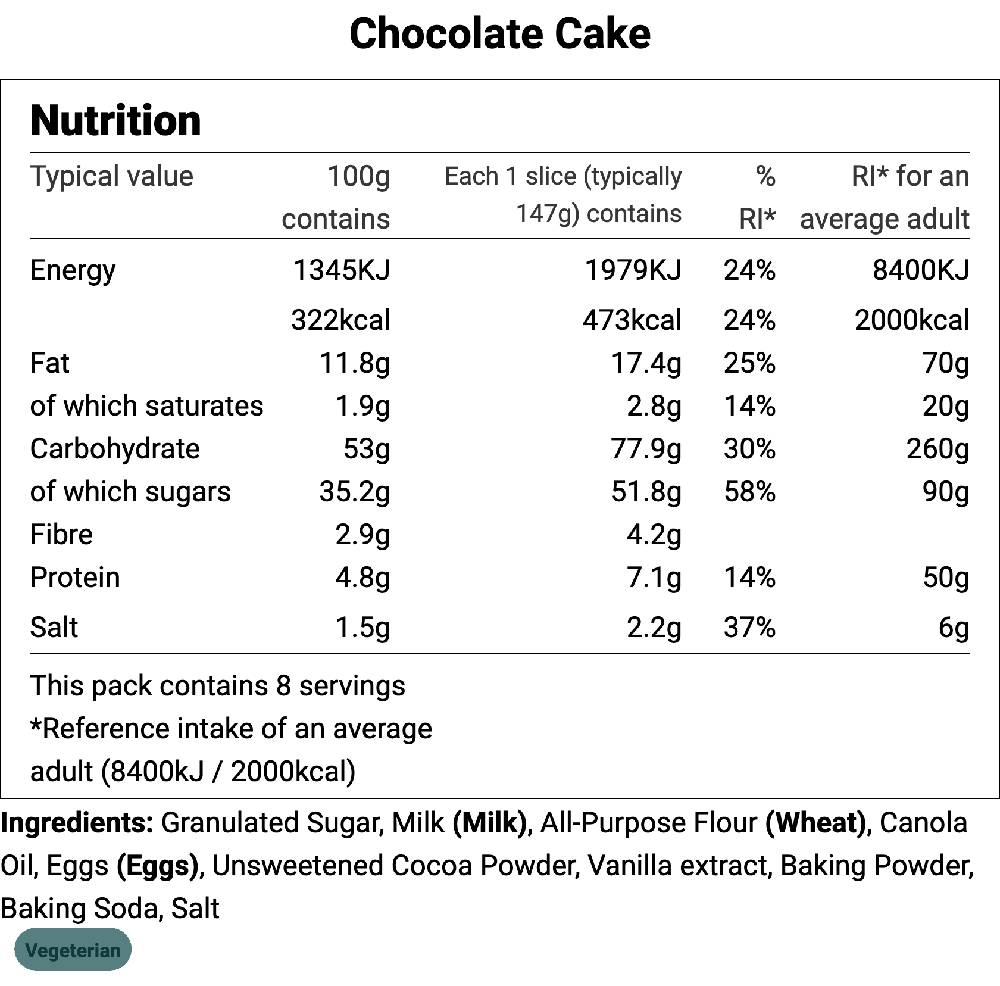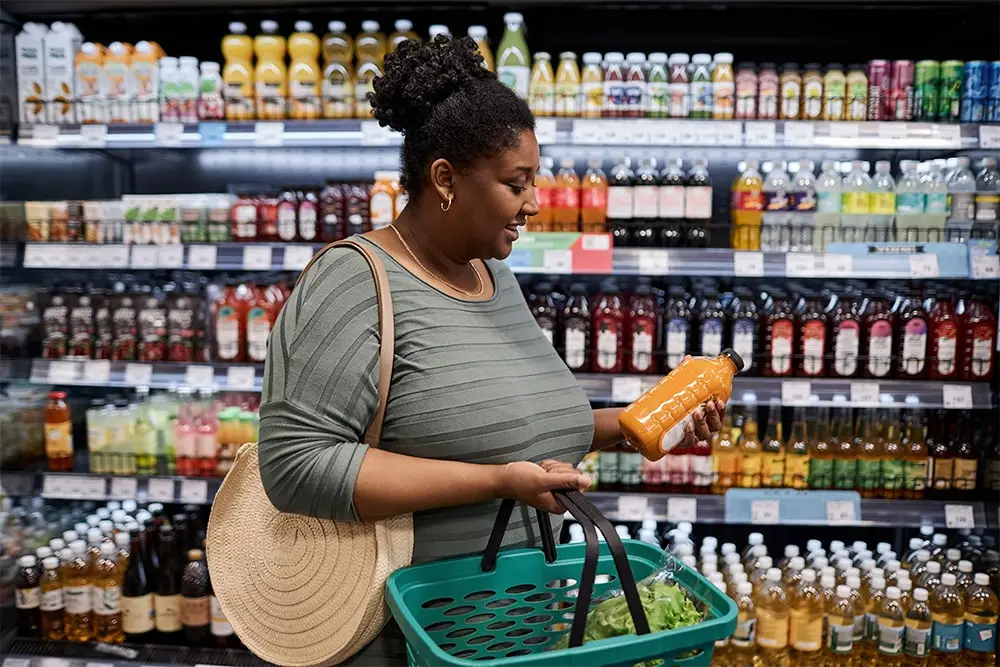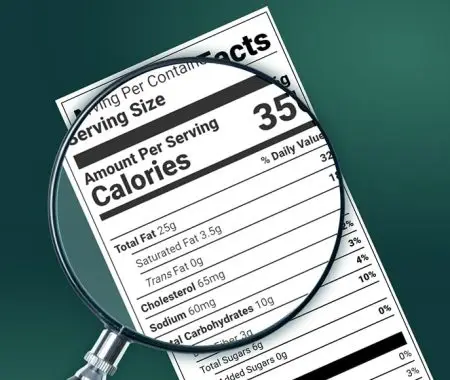In the post-Brexit era, UK food manufacturers must now navigate the changing nutrition labeling regulations, particularly when it comes to back-of-pack (BOP) labels on food products.
Compliance with these food labeling requirements is not just a legal obligation but a way to meet growing consumer expectations for transparency. Providing consumers with clear, comprehensive nutritional information, enables them to make more informed dietary choices for better health in the long run. Food labeling software, such as those offered by companies like Food Label Maker, can be an invaluable tool for businesses striving to create compliant and accurate labels.
This article aims to guide UK food manufacturers through the intricate process of adhering to nutrition labeling requirements, ensuring both regulatory compliance and consumer satisfaction.

TLDR
- UK Food Labeling Post-Brexit: Manufacturers must comply with updated nutrition labeling regulations, particularly for back-of-pack (BOP) labels.
- Mandatory Label Info: Nutritional data like energy (kJ/kcal), fats, carbs, protein, sugars, and salt are required per 100g or 100ml.
- Ingredient & Allergen Info: Ingredients listed by weight, allergens highlighted. Clear storage, usage, and manufacturer details are required.
- Optional Claims: Additional nutrients, vitamins, and health claims can be included but must follow strict regulations.
- Label Presentation: Nutrition info must be clearly displayed, with minimum font sizes to ensure readability.
- Consumer Impact: Clear labeling helps consumers make informed dietary choices and supports transparency.
- Food labeling software: Tools like Food Label Maker help businesses easily create compliant and attractive food labels, simplifying the regulatory process.
Understanding Back-of-Pack Food Labeling
Mandatory nutrition labeling refers to the legal requirement for food manufacturers to provide specific nutritional information on their food product packaging. In the UK, this is governed by the Food Information Regulations 2014, which incorporates retained EU law, specifically EU Regulation (EC) No. 1169/2011. These regulations ensure that consumers have access to standardized, accurate nutritional information, enabling them to make informed choices about their food purchases.
The primary purpose of back-of-pack (BOP) labeling is twofold: it promotes transparency in the food and beverage industry with detailed nutritional information and empowers consumers with the knowledge they need to make healthier dietary decisions.
See How FoodLabelMaker Can Help You
Key Back of Pack Labeling Requirements
To ensure compliance with UK food labeling regulations, manufacturers must adhere to specific back-of-pack labeling requirements. These guidelines dictate the content, format, and presentation of nutritional information on food packaging. For a comprehensive understanding of these food labeling requirements, producers can refer to official guidelines, including the Nutrition Technical Guidance resource provided by the UK government or the NHS website.
Mandatory Nutrition Information
The following information must be included on the back-of-pack label:
- Energy value and Calories: in both kilojoules (kJ) and kilocalories (kcal).
- Nutritional information and energy must be shown per 100g or 100ml
- Fat content: in grams (g).
- Saturated fat content: in grams (g).
- Carbohydrate content: in grams (g), including:
- Sugars: in grams (g).
- Protein content: in grams (g).
- Salt content: in grams (g)
- Food manufacturers should place a focus on using “salt” rather than “sodium” as it is a term that is used more in a daily context by consumers (it is calculated by multiplying total sodium by 2.5).
- In some instances, you can also mention that there is no added salt in your food product and that it is exclusively aligned with naturally occurring sodium.
The order of mandatory ingredients are presented in tabular format (if space permits) or in a linear format. They must be listed in the following order:
- Energy (kJ)
- (kcal)
- Fat (g)
- of which saturates, mono-unsaturates, polyunsaturates (g)
- Carbohydrate (g)
- of which sugars, polyols, starch (g)
- Fibre (g)
- Protein (g)
- Salt (g)
- Vitamins and minerals
- Net Quantity: This indicates the weight or volume of the entire food item on your labels. It is often displayed in grams (g), kilograms (kg), milliliters (ml), or liters (L).
Ingredient List and Allergens
- Ingredient List: All ingredients in the product must be listed in descending order by weight, with allergens highlighted (e.g., displayed in bold or uppercase).
- Allergen Information: Specific mention of allergens such as nuts or lactose contained in the product must be shown on labels, either in the ingredient list or in a separate statement. This complies with Natasha’s Law and is useful for more vulnerable consumers who cannot consume allergens.
Additional Product Information
- Storage Instructions: There must be guidelines on how to store the product, for example, “Keep Refrigerated” or “Store in a Cool, Dry Place.”
- Usage Instructions: Step-by-step directions for preparation, cooking, or serving if applicable.
- Manufacturer or Supplier Information: Name and contact details of the producer, packer, or distributor.
- Best Before or Use By Date: The date by which the food is expected to retain its quality (best before) or be safe to eat (use by).
- Batch or Lot Number: For traceability, the labeling should contain a code used to identify the specific batch of the product.
- Country of Origin: Where the food or main ingredients were sourced, especially for meat, fish, and fresh produce.
- Barcodes and Recycling Information: Instructions on how to dispose of the packaging or recycling instructions, and sometimes labeling includes barcodes for retail use.
Example of a Typical Back-of-Pack Label Layout

Voluntary Added Nutrition Claims on BOP Food Labels
While certain nutritional information is mandatory on back of pack food labels, manufacturers can include additional nutrition claims to highlight specific qualities of their products. These voluntary claims can provide consumers with more detailed information about the food’s nutritional content and potential health benefits. However, these claims must adhere to strict regulations to ensure accuracy and prevent misleading information.
Optional Nutrients
In addition to mandatory nutritional information, manufacturers can voluntarily declare additional nutrients on their food labels. These may include:
- Mono-unsaturates
- Polyunsaturates
- Polyols
- Starch
- Fiber
- Vitamins and minerals (provided they are present in significant amounts, e.g., 15% of Nutrient Reference Value (NRV) per 100g)
Nutrition and Health Claims

When making nutrition or health claims, manufacturers must adhere to specific guidelines:
- % reference intakes (RIs) must be provided when declaring added vitamins and minerals on food labels.
- A health claim, a claim that promotes the food as having a health benefit or promoting one’s health, can be included on a nutrition label
- However, it must not state that the food product is going to treat a medical condition or cure a disease unless it is backed up by legitimate scientific research
- A nutrition claim indicates whether a product has a higher or lower amount of vitamins or minerals.
- However, it must be listed on the designated official Great Britain nutrition and health claims (NHC) register.
- For claims about nutrients not listed in the register (e.g., “High in Vitamin D”), the amount must be shown near the nutrition label, but does not have to be displayed inside the nutrition table itself.
- For example, Vitamin D content would be displayed in milligrams (mg) or micrograms (µg) next to the nutrition label.
- It’s important to note that certain nutritional information cannot be declared or provided on food labels, including:
- Trans fats
- Cholesterol
Rules For Declaring Vitamins and Minerals
When including vitamins and minerals on food labels, manufacturers must follow these guidelines:
- As previously stated, only vitamins and minerals present in “significant amounts” can be listed.
- For further definition, “Significant amounts” means:
- 15% of the nutrient reference value (NRV) per 100g or 100ml for non-beverages.
- 7.5% of the NRV per 100ml for beverages.
- 15% of the NRV per portion if it’s a single-serve package.
- NRV values for vitamins and minerals are defined in EU regulations (Annex XIII).
- Nutrition labeling is required if a product makes a nutrition or health claim about vitamins or minerals, or if they are added to the product.
- However, the vitamin or mineral must be present in a “significant amount” for the claim to be valid.
- For products with serving sizes under 100g or 100ml, the “significant amount” is determined by the NRV per 100g/100ml.
For example: If a 50g serving of yoghurt claims to be a “Source of Vitamin D,” the amount of Vitamin D in that serving must be at least 15% of the NRV for Vitamin D based on current EU standards.
Labeling Nutrition Information Per Portion

While providing nutrition information per 100g or 100ml is mandatory, manufacturers also have the option to complement this with per-portion or per-consumption unit data.
This additional information can be useful for consumers, as it relates more directly to or portrays a more realistic depiction of how they might consume the product. Examples of a per portion or per consumption unit are:
- A single slice of bread
- One piece of chocolate
- A portion of nuts
When including per-portion information, it’s crucial to:
- Clearly define the portion size (e.g., “one apple slice,” “25g serving”)
- Place this information near the nutrition declaration
- State the total number of portions in the package
It’s important to note that while the number of portions must be listed, there’s no specific requirement for where this information should go on the product packaging. Including per-portion nutritional data can be useful for food products marketed as low-fat or low-calorie, as it allows consumers to easily understand the nutritional impact of a typical serving.
Format and Presentation Back-of-Pack of Nutrition Labels
The presentation of nutrition information on food packaging is subject to specific regulations to ensure clarity and consistency for consumers.
Key food labeling requirements include:
- Nutrition information must appear directly on the package or attached to the label if it is a pre-packed foods.
- All mandatory and voluntarily added nutrients must be presented together, in the same field of vision, and in a specific order as outlined in the regulations.
- The information can be placed on any surface of the packaging, not just the back, as long as it meets the specific font size requirements.
Label Legibility Rules
To ensure that nutrition information is easily readable by consumers, specific font size rules apply:
- For regular packages: The minimum font size (x-height) is 1.2mm.
- For packages with less than 80 cm² surface: font size can be reduced to 0.9mm.
- For packages with less than 25 cm² surface area: nutrition labeling is not required.
The goal of these formatting requirements is to present nutritional information in a standardized, easily comparable way across different food products. These rules aim to balance the need for comprehensive information with practical constraints of packaging sizes. By following these guidelines, food manufacturers can ensure their products comply with regulations while providing clear, accessible nutritional information to consumers.
The Importance of Back-of-Pack Nutrition Labeling on Food Products

Back-of-pack nutrition labeling plays a crucial role in empowering consumers to make informed dietary choices. By providing clear and transparent nutritional facts on product labels, it enables individuals to select healthier food options and manage portion sizes of foods containing less beneficial ingredients.
The NHS provides guidelines on how to interpret these labels. For example, this is how to read if a product is high in sugar:
- High: if it contains more than 22.5g of total sugars per 100g
- Low: if it contains 5g or less of total sugars per 100g
These standardized food labeling requirements help consumers quickly evaluate the nutritional value of packaged food sold in a supermarket or any store where they purchase most packaged foods. It is a user-friendly way to promote better health outcomes and supports informed decision-making in the marketplace.
Compliance with Specific Requirements Post-Brexit
Post-Brexit Changes
While UK food labeling legislation largely mirrors EU regulations, there have been some minor labeling changes post-Brexit. Manufacturers must stay vigilant about UK-specific nuances, such as the use of UK nutrition label templates and standards. It’s crucial for food producers to regularly review and update their labeling practices to ensure continued compliance with evolving UK regulations.
Enforcement and Penalties
Non-compliance with mandatory nutrition labeling regulations can result in significant penalties from regulatory bodies such as the Food Standards Agency (FSA). Not only can manufacturers and F & B companies face monetary fines or legal penalties, but in serious circumstances, your products can even be banned or recalled from production. These penalties underscore the importance of adhering to labeling requirements, not only for legal compliance but also for maintaining consumer trust and brand reputation.
Food Labeling Software
For many businesses in the food and beverage industry, navigating the complexities of regulatory compliance and knowing how to accurately label your products can be a challenging feat. This is where food labeling software comes in.
Companies like Food Label Maker assist businesses by creating accurate and compliant food labels that follow federal regulations and adhere to the required label information of the country you sell packaged food.
Their newly released Enterprise features ensure accurate and precise calculations of ingredients, portion sizes and nutritional values for every recipe you create. Browse their website to explore their user-friendly and advanced features to suit your business needs.
Conclusion
Adhering to back-of-pack nutrition labeling regulations is essential for both legal compliance and maintaining consumer trust. Accurate and clear labeling not only helps avoid costly penalties but also ensures transparency, which enhances brand reputation. Proper labeling ensures that consumers have the necessary information to make informed decisions about their purchases, particularly regarding health and dietary choices.
Food manufacturers should regularly review their labeling practices to stay aligned with the latest UK regulations, especially as they continue to evolve post-Brexit. Utilizing tools like Food Label Maker (FLM) and other food labeling software platforms can streamline the process, ensuring that all mandatory and voluntary elements are compliant, up-to-date, and easy for consumers to understand.



